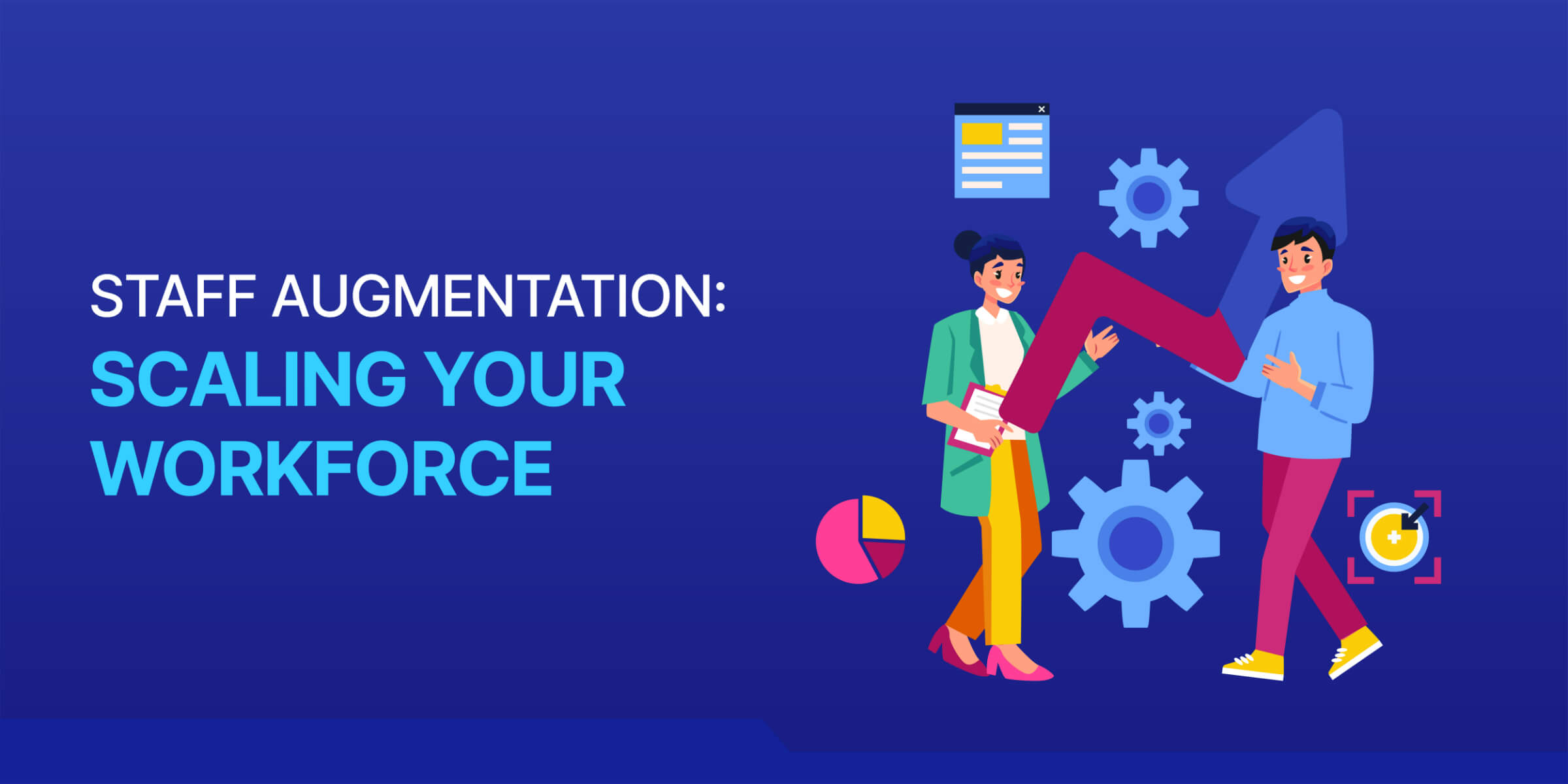Ever pondered how firms scale without long-term hires? That's the magic of staff augmentation. It's a game-changer, allowing businesses to tap into specialized skills temporarily.
In today's tech-driven world, this strategy is pivotal.
Imagine needing an AI expert for just a project. Staff augmentation makes it possible without permanent commitments.
Table of Contents
- What is Staff Augmentation & How Does It Work?
- Why is Staff Augmentation Common for Developers?
- Types of Staff Augmentation
- When to Use Staff Augmentation
- Staff Augmentation Models & How to Choose One
- How to Implement Staff Augmentation
- Best Place to Find Software Developers for Staff Augmentation
- Frequently Asked Questions
We offer this website completely free to our visitors. To help pay the bills, we’ll often (but not always) set up affiliate relationships with the top providers after selecting our favorites. However, we do our best not to let this impact our choices. There are plenty of high-paying companies we’ve turned down because we didn’t like their product.
An added benefit of our relationships is that we always try to negotiate exclusive discounts for our visitors.
Why We Like Toptal
What is Staff Augmentation & How Does It Work?
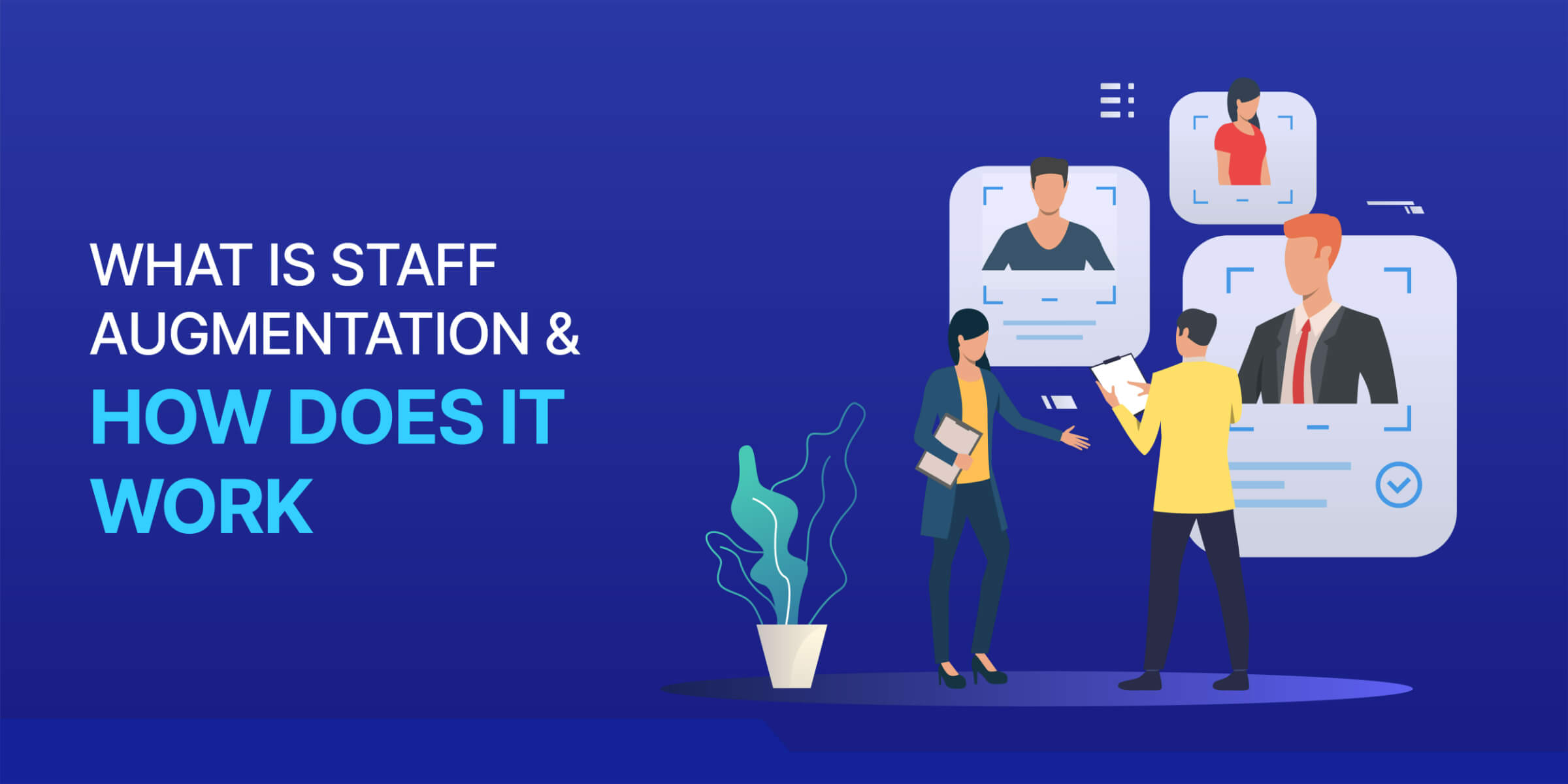

Staff augmentation is a strategy where businesses supplement their existing workforce with specialized, external talent. It’s a temporary solution to meet project-specific needs. It involves contracting individuals or teams to fulfill certain roles or skills temporarily lacking in-house.
Benefits of Staff Augmentation
Staff augmentation offers flexibility, allowing companies to scale up or down based on project requirements. The top benefits include:
- Access to Specialized Skills: Staff augmentation allows companies to tap into a vast pool of specialized, highly skilled professionals to address specific project needs.
- Cost Efficiency: By hiring temporary staff only when needed, businesses can manage operational costs more effectively. Augmentation avoids the financial obligations associated with full-time employees.
- Enhanced Productivity: Bringing in experienced professionals can boost the project's pace and quality, reducing the learning curve and time to market.
- Flexibility and Scalability: Staff augmentation helps organizations easily adapt to workload fluctuations. They can scale their teams up or down based on project requirements.
- Risk Mitigation: Augmenting staff can help companies manage risks better by ensuring continuous workflow during peak times or when in-house staff is unavailable.
Challenges of Staff Augmentation
Despite the benefits of staff augmentation, there are also some common challenges to be aware of, including:
- Integration and Coordination: Aligning augmented staff with existing teams and workflows can be challenging. It requires clear communication and robust management strategies to ensure seamless collaboration.
- Quality and Consistency: Maintaining high-quality outputs and uniformity in work processes can be difficult. The variable skill levels and work habits of temporary staff members may provide consistency concerns.
- Security Concerns: Incorporating external talent may expose companies to security risks. It requires stringent measures to safeguard sensitive information and intellectual property.
Why is Staff Augmentation Common for Developers?


Staff augmentation is especially common for software developers because of the highly specialized and project-based nature of software development work. Companies can swiftly onboard experts with niche skills to address specific technical needs or to supplement the in-house team as needed.
Staff augmentation also offers several benefits for finance teams. Learn how to hire an outsourced finance team.
The top reasons that staff augmentation is common for hiring software developers include:
- In the rapidly evolving tech industry, acquiring the right talent on-demand is crucial.
- It allows companies to maintain project control, ensuring that developments align with the company’s goals and visions.
- It accelerates project timelines
- It facilitates the delivery of high-quality software products.
- It’s a cost-effective solution for companies to manage their resources efficiently, optimizing staff levels based on the immediate project requirements.
Types of Staff Augmentation
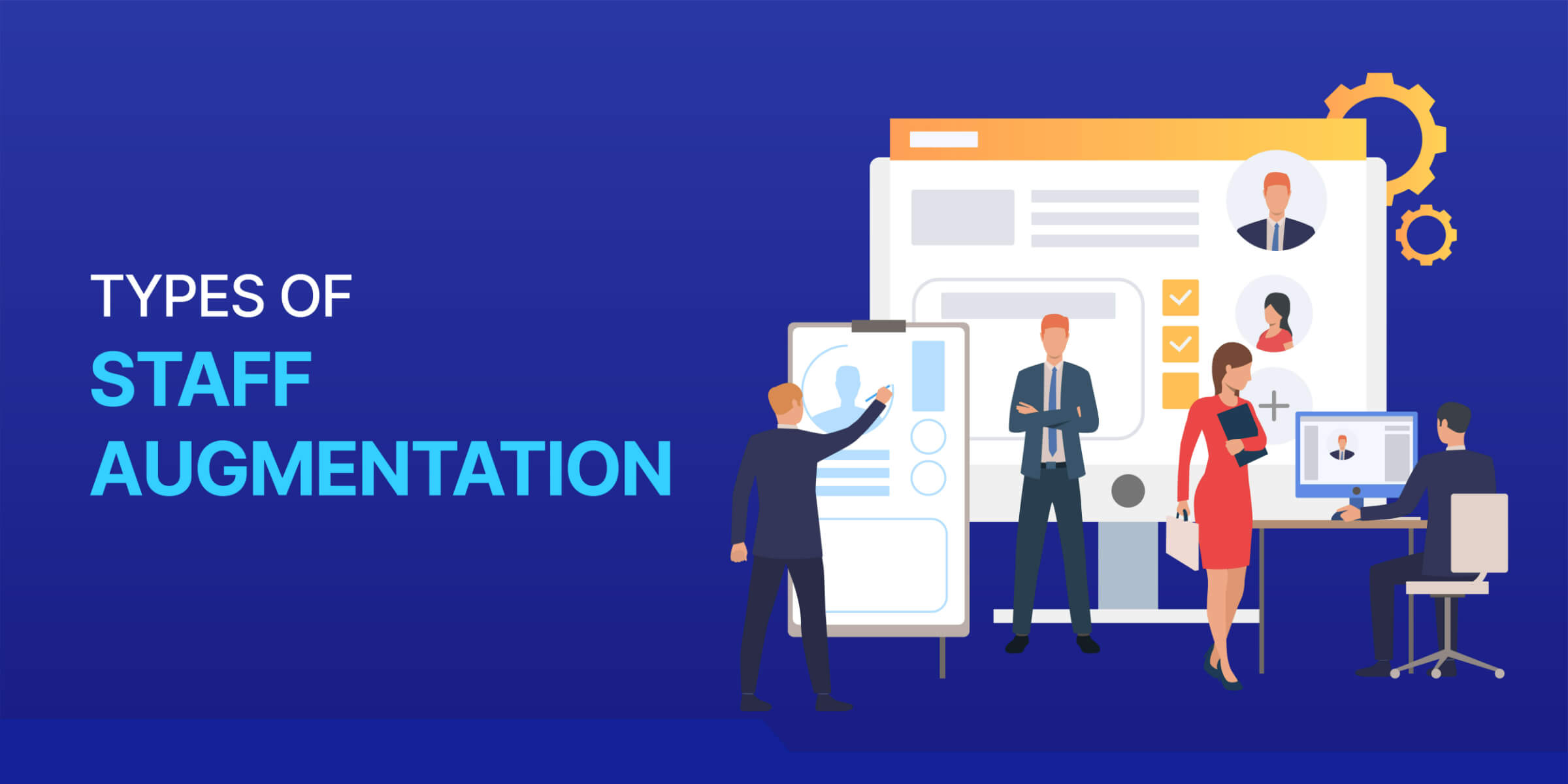

There are several different types of staff augmentation, including:
Commodity-Based Augmentation
The purpose of commodity-based augmentation is to simply add more manpower to an organization with a shortage. Typically, it’s used for non-specialized and highly repetitive tasks. Organizations use it when they need to quickly fill positions that don’t require extensive skill.
Examples include:
- Customer service
- Data entry
- Transcription
Skill-Based Augmentation
Skill-based augmentation is about bringing in specialized, moderately skilled workers. They boast more extensive education and specialized experience compared with the average worker. This allows them to efficiently handle tasks that a company’s regular employees may not have the knowledge of.
Areas to consider skill-based augmentation include:
- Software engineering or software development
- Web design
- Software testing
Highly-Skilled Augmentation
Highly skilled augmentation is about hiring an expert in a specific domain. The expert comes in to handle complex or strategic things:
- Blockchain n
- Data Science
- AI
When to Use Staff Augmentation
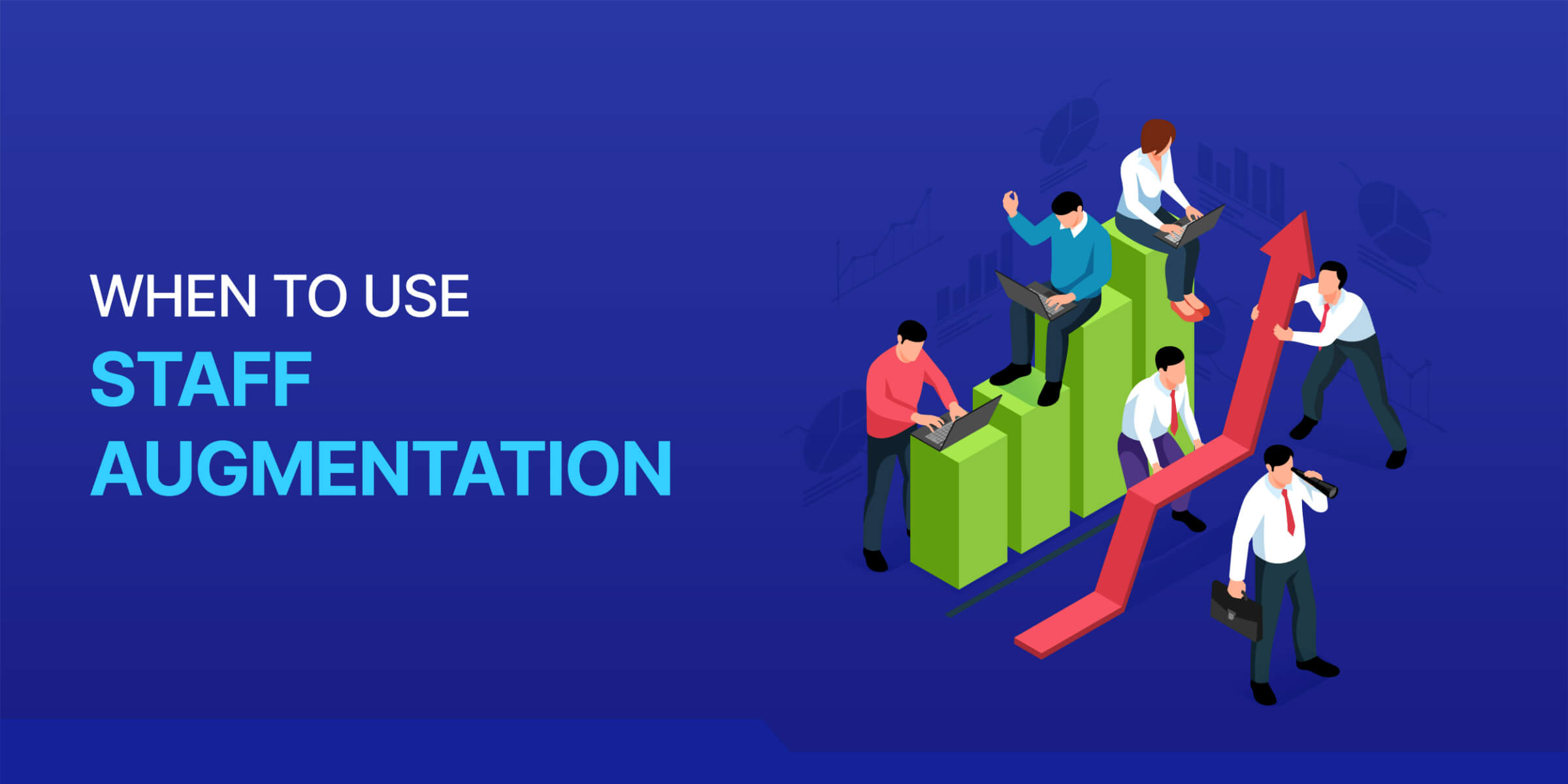

There are several instances to consider staff augmentation. A few signs that this strategy may benefit your organization include:
- Require Specialized Skills: When a project requires specific skills or expertise that the current staff lacks, augmentation can fill the gap with specialized talent.
- Flexible Workload Management: It’s beneficial when there are fluctuations in workload, and there’s a need to scale the team up or down based on project demands, avoiding the long-term commitments of permanent hiring.
- Short-term projects: For projects with a limited timeline, when hiring a full-time employee is not practical.
- Budget Constraints: When budget limitations make hiring full-time, specialized staff unfeasible, staff augmentation offers a cost-effective alternative to access the needed skills.
- Risk Mitigation: It is also used when there is a need to mitigate the risks associated with turnover and ensure continuity in project delivery, especially during critical phases.
- Testing New Roles: Companies looking to explore new roles or assess the need for particular skills in their projects may opt for staff augmentation before deciding on permanent positions.
Staff Augmentation Models & How to Choose One


Some common models for staff augmentation include:
On-site Staff Augmentation
The temporary professionals work at your location with on-site augmentation. This way, you can communicate directly and integrate them into your teams. Consider on-site augmentation if the project requires close collaboration and in-person interactions.
Pros:
- Easier to integrate with teams, may be less threatening to in-house employees
- Facilitates face-to-face communication
- Ideal for projects that require a lot of collaboration and coordination
Cons:
- Requires more training
- May impact management resources
- This may create co-employment issues and tension
Remote Staff Augmentation
Remote staff augmentation means that the hired external resources work remotely. This method opens up augmentation to a global talent pool. It also requires fewer resources than on-site augmentation.
Pros:
- Straightforward, simple model
- Quick to implement
- Scalable solution
- Minimal costs and time investment to onboard augmented staff
Cons:
- Quality and reputation are a concern and require careful research ahead of time
- It’s not as flexible of a solution, as coordination can be challenging
Project-Based Staff Augmentation
With project-based augmentation, the organization hires external resources for a dedicated product. They collaborate with them for a set deliverable, predetermined duration, or an outlined project scope. It’s an effective way to meet clear milestones and achieve a set outcome.
Pros:
- Immediate productivity
- Flexible and scalable for different project needs
- Speedy project completion
Cons:
- Security and Confidentiality Risks
- Challenges managing resources
- Fluctuating costs based on deliverables
Team-Based Staff Augmentation
Instead of just hiring individuals, you may also use the team-based model to hire an external team to handle various specialized needs. The team includes professionals with a variety of skills to handle a comprehensive need.
For example, you may opt for team-based staff augmentation to handle marketing. The team may have its own copywriting, director of marketing, SEO marketer, social media marketer, email marketer, etc. who all work together to plan and execute your marketing strategy.
Pros:
- Reduces your overhead of hiring and managing several augmented roles
- Can handle a wider scope of needs
- Quick adaptation to project changes
- Cost-effective way to allocate resources
Cons:
- May be more difficult to integrate and adapt
- Varied quality levels within the team
- More expensive than working with a single professional
How to Implement Staff Augmentation
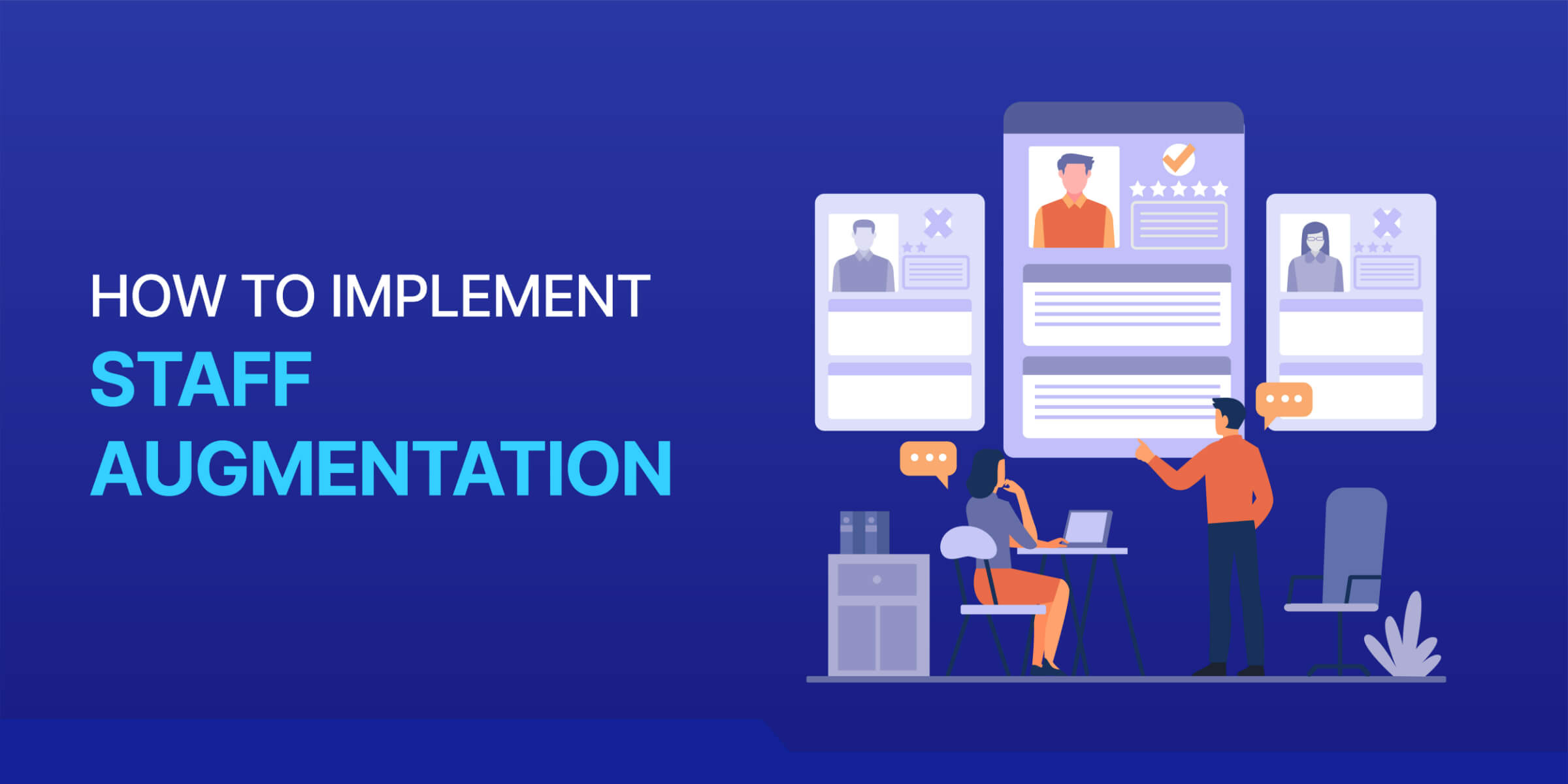

To see the many benefits of staff augmentation and mitigate the risks, you must properly implement this solution. Here’s a guide on how to succeed with team augmentation:
Evaluate Skill Gaps
The first step is to understand internal skill gaps. This may include short-term gaps, like for a major upcoming project, or long-term gaps that may prevent you from reaching business objectives. Outline where staff augmentation may help fill the gaps.
Choose the Ideal Augmentation Model
Evaluate if on-site, remote, project-based, or team-based augmentation is the ideal solution. Of course, you may leverage a combination of these to fill different needs. For example, you may determine you need project-based augmentation to launch a digital transformation, but that you then need team-based augmentation to fill a long-term IT gap.
Define the Scope of Work
Define the unique objectives that you expect from the augmented staff. Outline what you need them to accomplish, as well as the:
- Time
- Detailed tasks
- Outcomes
- Deadlines
- Expectations
Review Options in Detail
Evaluate several options before choosing one. Compare various professionals to determine the best fit for your project and team.
Some considerations to evaluate include:
- Experience level
- Type of experience
- Unique skills
- Communication style
- Cost
- Case studies/ reviews
Establish Effective Integration and Communication
Onboarding the new team members is vital, no matter which type of augmentation you opt for. Integrate them with the necessary channels and processes to ensure effective communication. Check-in with any augmented workers frequently, ensuring collaboration and efficacy.
Best Place to Find Software Developers for Staff Augmentation


Toptal is the best freelance website to find software developers for staff augmentation.
They do the legwork for vetting prospective developers, only allowing the top 3% onto their platform. Find pre-screened, qualified developers for long-term and short-term projects in no time. They directly connect you with the top candidates for your project needs, streamlining the process.
Why We Like Toptal
- Top Talent: Get access to elite, pre-screened candidates (only accepts the top 3%)
- Flexibility: Ideal for long-term or shorter-term specialty projects
- 14-Day Risk-Free Trial: Only get billed if you're satisfied
Frequently Asked Questions
What is staff augmentation vs. outsourcing?
Staff augmentation adds temporary specialized talent to your existing team, maintaining your control over projects. Outsourcing transfers entire projects or functions to a third-party provider, relinquishing day-to-day control but reducing operational burden.
Why do companies use staff augmentation?
Companies use staff augmentation to access specialized skills, scale teams for project needs, optimize operational costs, and maintain flexibility.
Do I need staff augmentation?
If your business requires specialized skills temporarily, faces fluctuating workloads, or needs to swiftly adapt to market demands without the long-term commitment of hiring, staff augmentation could be beneficial.
What are the benefits of staff augmentation?
Staff augmentation offers access to specialized skills, enhanced productivity, operational flexibility, cost efficiency, and risk mitigation. It allows companies to adapt to project needs and market demands swiftly and effectively.














